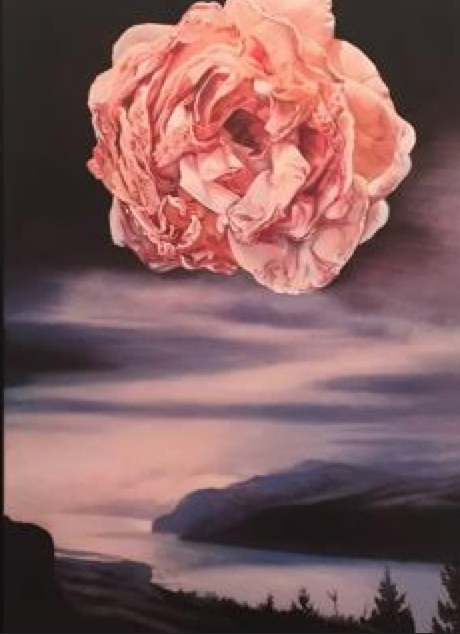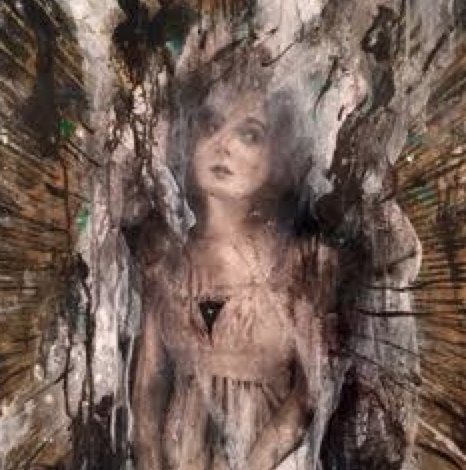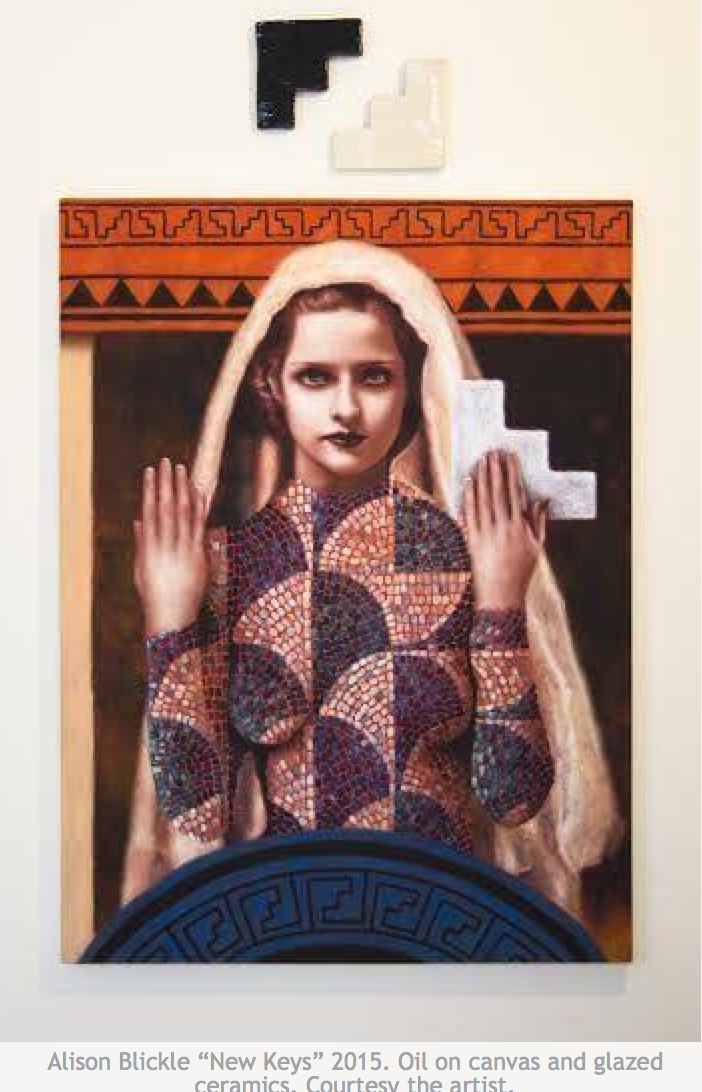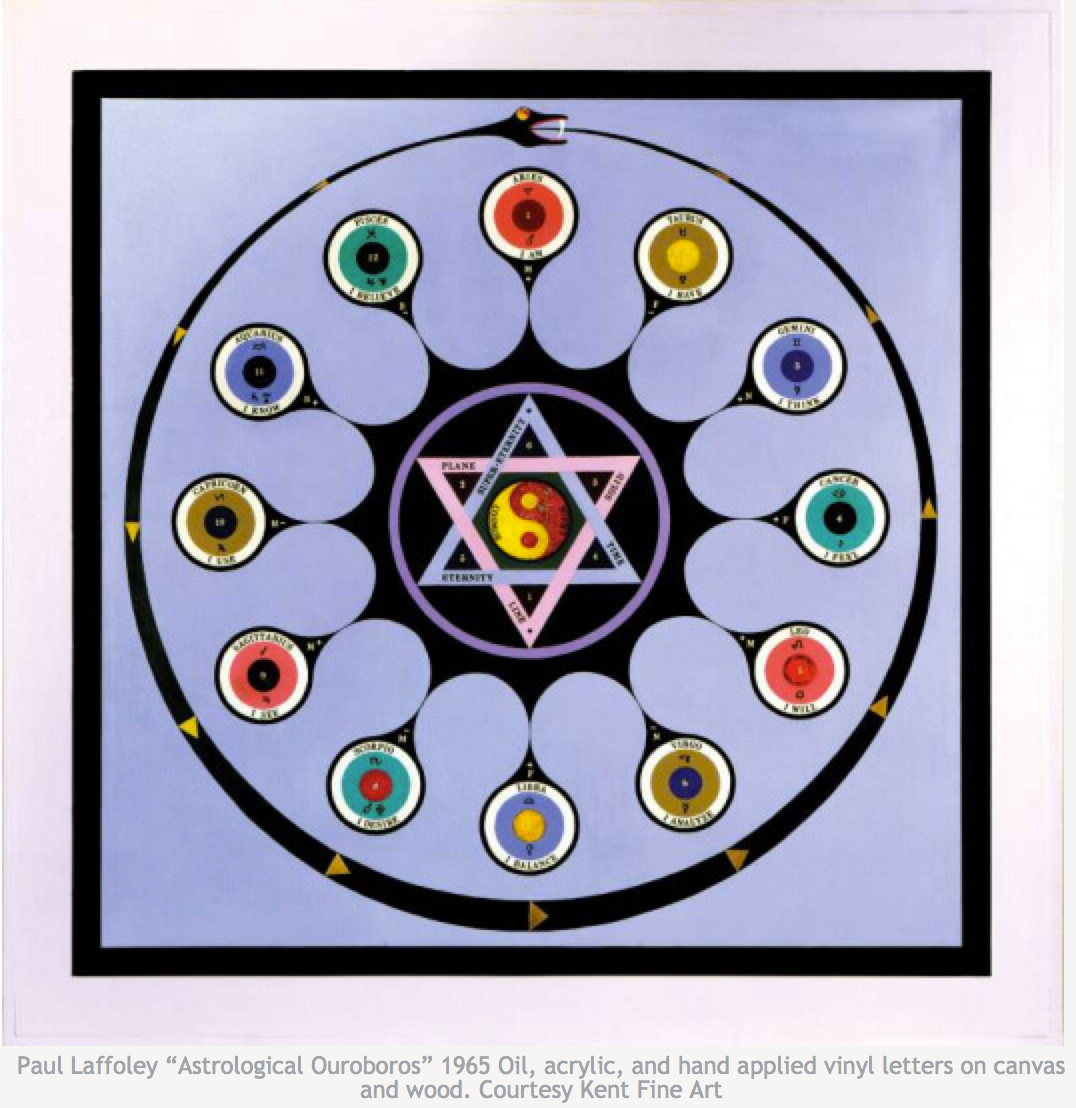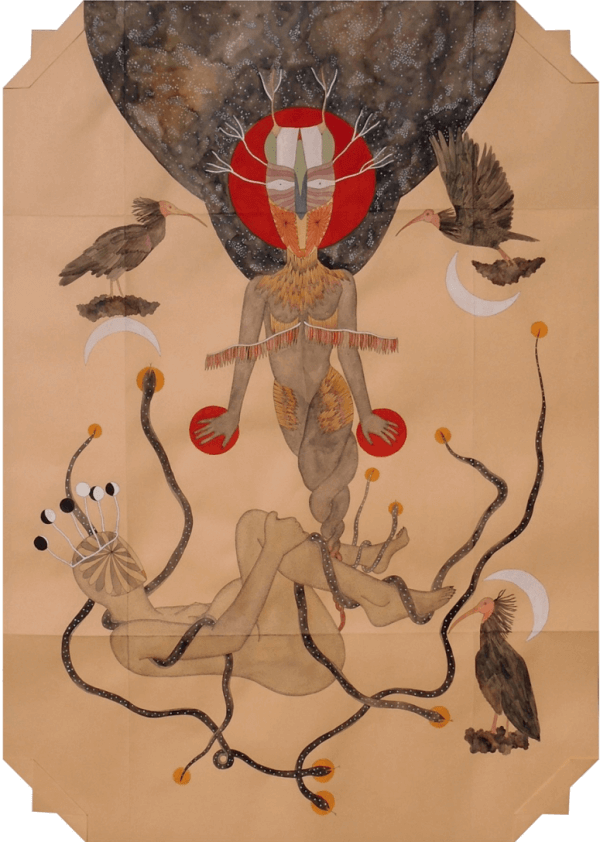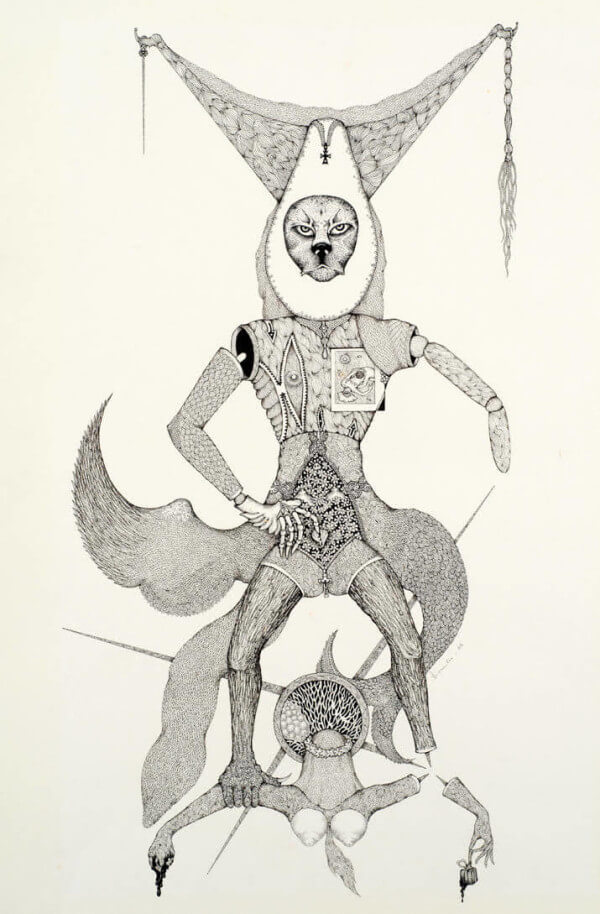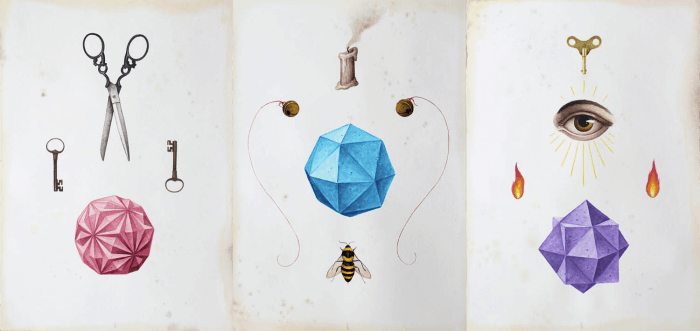If you don't know who Gland is, you should. They're an awesome punk band from New Orleans, and they're music is about to make you care EVEN MORE about the state of the world right now. and that’s all I know about them. Their music rages against structural racism, sexism, and capitalism in a way I haven't seen lately.
Read MoreAUTUMN DE WILDE
Melancholic Mondays: Elliott Smith's 'Miss Misery' And Where We Go When We Die
This week's Melancholic Mondays delves into the tragic, beautiful work of Elliott Smith.
Read MoreAll photos by LEAH BANK
Femmequerade: The Witch Ball Recap
BY LIZ VON KLEMPERER with PHOTOS BY LEAH BANK
On October 25, Greenpoint’s Good Room was transformed into a femme haven for the second Femmequerade Ball. The mission of the gathering was to both rally against toxic masculinity and honor the divine feminine through music, dance and revelry. In keeping with this philosophy, admission fee was $18 for cis straight white men, and $15 for everyone else.
By 8 p.m. a smog machine puffed ample smoke onto the dance floor, which was illuminated by a glittering disco ball. Pointed witch hats bobbed in the throng as femmes swayed together. Organizers Raechel Rosen and Coral Foxworth flitted around the room, setting the tone by lighting incense and candles.
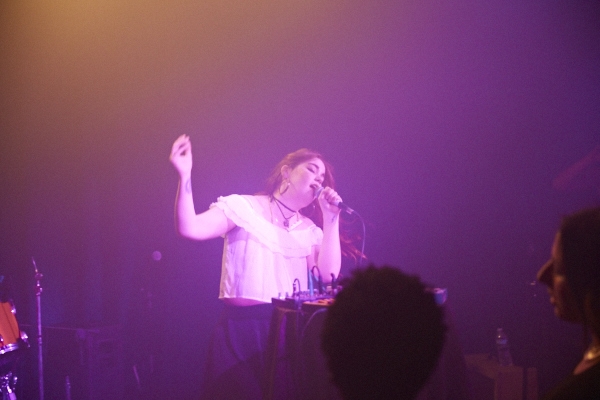
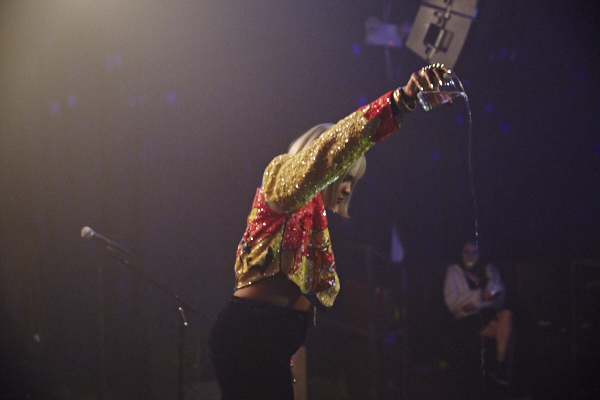
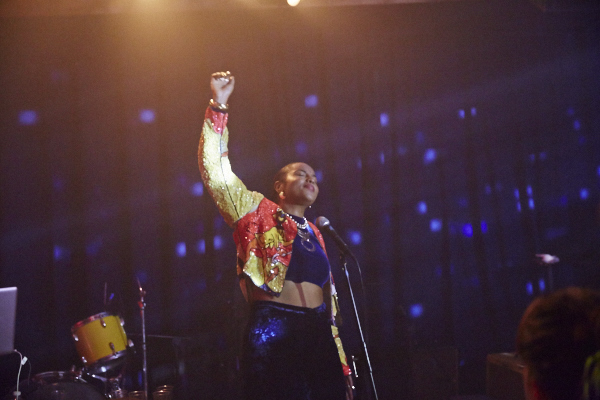
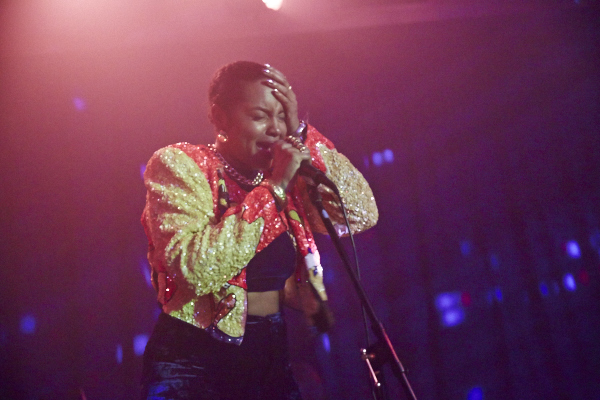
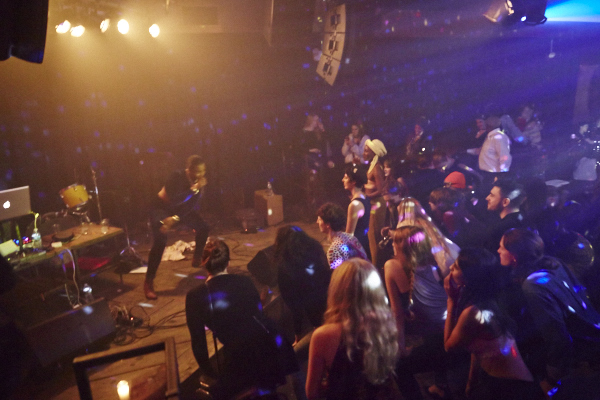
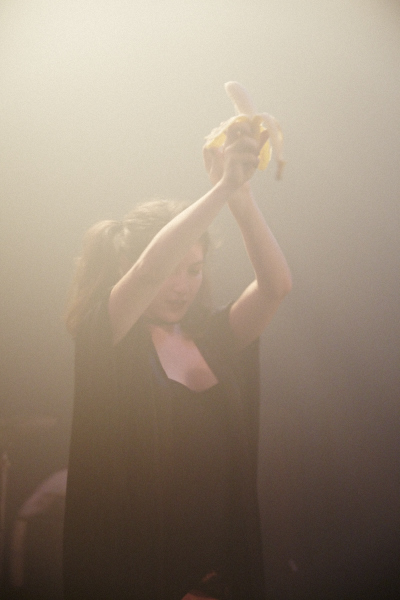

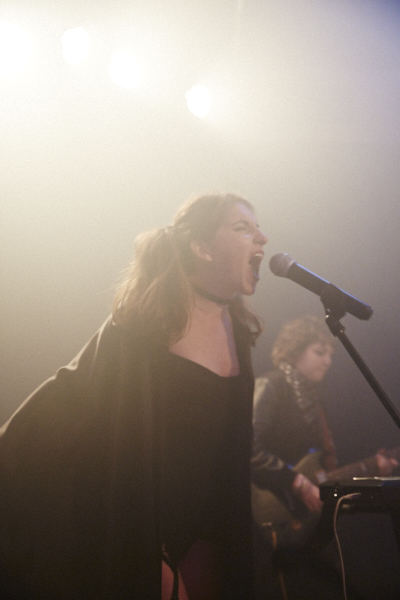
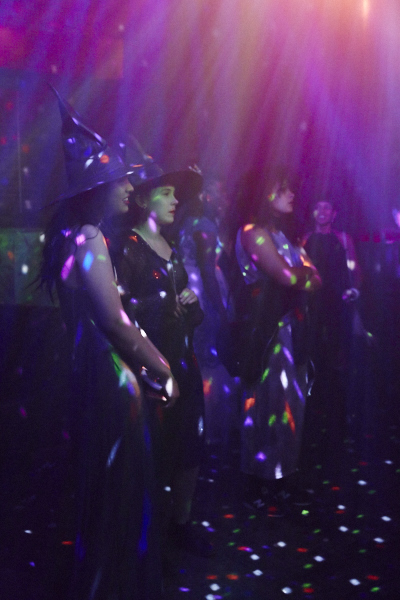
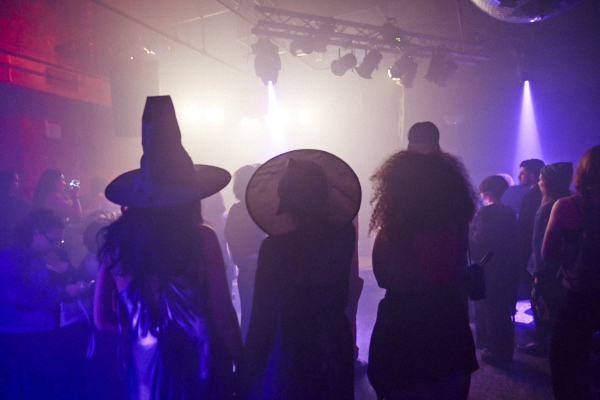
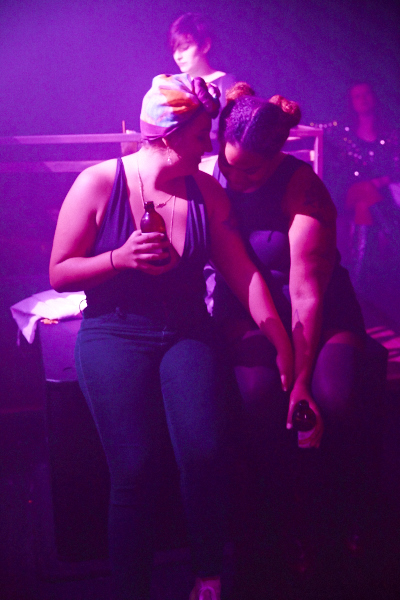
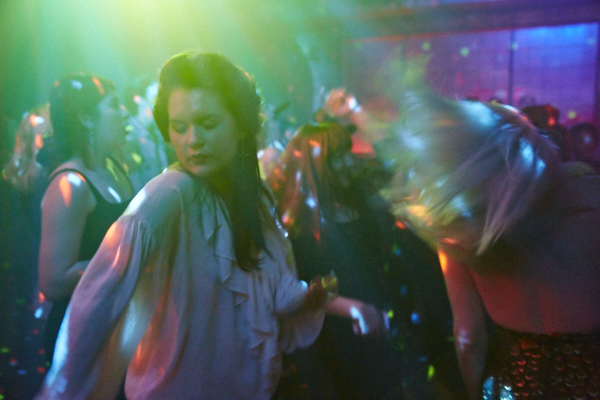
“Everything came together around the full moon,” Foxworth, also known as FXWRK, says of the planning process. The success of first Femmequerade Ball, which was held on August 18, attracted artists such as Anna Wise, Latasha Alcindor, and more to join forces for the second installment.
Raechel Rosen, who doubles as the lead singer and keytarist of her band Mima Good, got on stage after Yatta Zoker. Raechel beckoned for the crowd to come closer, and began to sing her witchy brand of rock and roll. Her final song, American Finger Trap, featured her signature onstage move: slowly peeling a banana and circumcising it with a pair of scissors. Much of Rosen’s artistic practice is dedicated to combatting rape culture and empowering survivors by through voicing trauma.
“Politically I think it’s fucked up the way that we’re taught to deal with sexual assault in our culture,” Rosen explains. “The victim has this secret to bear. She has to go be in support groups, get therapy and deal with PTSD. People treat it like you’ve caught this sickness and you can’t say who gave it to you. It’s as though it’s your personal secret, where in reality it’s the secret of the assaulter.”
Attendees seeking a brief respite from the high-energy dance floor could dip into Greenroom’s second smaller room. The space was occupied by Catland, a Brooklyn bookstore which supplies spiritual goods such as candles and crystals. Books about the occult were for sale, along with other memorabilia. Catland practitioners were also available to give tarot readings.
Next Latasha Alcindor, also known as L.A., took the stage. She began with a ritual in which she splashed water around the stage and then launched into a spoken word piece about the power of witchcraft and her Caribbean heritage. L.A.’s last song was about her neighborhood, and the all too prevalent phenomenon of gentrification.
“I’ve never played this in front of anyone before,” she confessed to the audience.
“To be honest, it feels odd to sing this song in front of a group of white people. But it’s important, so I’m going to do it.”
The rap was raw and authentic. L.A.’s face knit with a palpable anguish as she sang about the displacement her hometown has had to face. The crowd erupted in applause.
Headliner Anna Wise prefaced her performance by affirming the intention of the event.
“I’m all about this cause,” she said, addressing the crowd.
“This period of time is marked by the uprising of the oppressed,” she continued. “That includes femmes, and it also includes racial minorities.”
Wise’s awareness is in part influenced by her experience working with Kendrick Lamar on his latest album, To Pimp a Butterfly, which she described as one of the most pro black albums of 2015. Wise then launched into her hit songs BitchSlut and Precious Posession. During her last song she hopped off the stage and danced amongst the crowd.
The DJs that spun after the live music portion of the event included FXWRK, DJ Dylan Sparkle, Abyss X and WWIII.
What can we expect of the next Femmequerade? The goal for the series, Foxworth says, is to, “create a space to imagine interaction outside of previous oppressive contexts. It’s also a place to play, because play is a really important and underutilized aspect of social change and activism. That’s why we dressed up. It’s a ball, it’s a spectacle, it’s tapping into an almost childlike energy in all of us, and I think that’s the kind of energy we need to heal.”
Liz Von Klemperer is the author of the unpublished novel Human Eclipse. Liz is a staff writer for Art Report, and has work featured in Autostraddle, Bust, Electric Literature, Luna Luna Mag, Hooligan Mag, and Breadcrumbs Mag. Visit her at lizvk.com.
Leah Bank is a Brooklyn based photographer, possibly from Mars, who enjoys late night cupcake baking and climbing rocks. She has work featured in BUST Magazine, F-Stop Magazine, and American Photography. Find her at www.leahbank.com.
It Was Romance Releases New Song + Shot By Shot Remake of Fiona Apple's Criminal
BY LISA MARIE BASILE
If you're reading this website, there is an 99.9% chance you were obsessed with Fiona Apple's Tidal. Because you're an angsty dreamer just like me. You probably also think "This world is bullshit." If so, read on!
Lane Moore – writer, comedian, musician and all-around amazing lady – is in a pretty amazing band, It Was Romance (Lane Moore, Alejandro Triana, Angel Lozada and Jeff Connors). They're celebrating Tidal's 20th anniversary – by releasing a shot-for-shot remake of the Criminal video to their own song, Hooking Up With Girls. Yay! Watch it below.
Also, I talked to Lane and she told me all about her music and love for Fiona:
You have so much going on. Tell me a little bit about why you guys started It Was Romance.
I've been singing and writing and recording my own music since I was little. It Was Romance actually started as my solo project where I played all the instruments and sang and layered everything on my computer. It's kind of a name like "Cat Power" is. Everyone told me I should just go play shows by myself and try to do it all, but even if I was writing all these songs and could technically do it by myself, I'd always wanted to find the right musicians to play with. It took me years and years to find the people who play with me now and the second it all fell into place I was like, "YES! Good. Great. OK, let's make this record." I wrote a lot of these songs before I even knew these guys existed in the world, so to finally see everything taking off with the right people is so satisfying.
It's the 20th anniversary (I am so old) of Tidal. It was the second cassette I owned and hearing Never Is A Promise as a wayward little goth made me who I am today. How did this album impact you growing up? What about today? Why is Fiona Apple just so goddamned amazing?
Fiona Apple has always been a huge influence on me, personally and professionally. I just think she's incredible and I relate to her on so many levels. When The Pawn was actually my gateway album and then I went back to Tidal after hearing that. I listened to both nonstop for most of my childhood and teen years and still listen to them all the time. She's just such a powerful singer and songwriter. I once heard one of the Crutchfield sisters (from PS Eliot) say something on Twitter like, "If you don't think Fiona Apple is punk rock, get away from me." It's so accurate. I get very intense on stage when we play live shows and I'm sure seeing her do the same at a young age gave me the freedom to show that intensity in my music and my performances.
How do you think Criminal video stands up against all the music videos out there today?
It holds up incredibly well. You look at a lot of the way we're advertising things now and so much of it looks like '70s porn.
What are some upcoming projects for your band?
I've been writing about 2-3 songs I was happy with per week since I was a kid, so I've always written them faster than any of my band members, past or present, could learn them. I have easily over 300 right now that I'd happily record in the studio/release tomorrow if I could. I'm really excited to make the second IWR album and keep making videos and touring and opening for bigger bands. All of it. I'm ready. [Follow them on Bandcamp, Facebook & iTunes]
What's coming up for you?
So many things. Maybe sleep eventually, but I doubt it.
PS: It Was Romance is playing Aug 17 @ Cake Shop in NYC and Sept. 30 @ Pianos in NYC.
via Lana Del Rey
American Longing Sagas: Lana Del Rey’s Atlantic City Show
LANA DEL REY is post-prison, LANA DEL REY is post-death signaling desire should equal euphoria even if created by extreme melancholy and desire should not be impounded by the confines of our world. Desire is an aggressor against age, weight, intact relationships, holding down employment, death, genetic attraction. Desire is a fantasy that is worth replacing life and must be attended to, through creating rituals to verify being within the bubble of desire is in fact living. Attending a Lana Del Rey concert is therefore the perfect pilgrimage for limerants needing outlets for their longing narratives and fans using Lana as a bridge to co-creating their sexual embodiment.
Read MoreArt as a Blend of Many Truths: Why We Shouldn't Question Beyoncé's Narrative
To tell a story (even your own), in a way, is to tell someone else’s–if it were only hers, how could we connect? How could we expect her to own every word? Why must it be debunked or defined at all?
BY LISA MARIE BASILE
Lemonade emerged from darkness at a time of political unrest and volatile racism. For many, I’m sure, it also comes about as a Spring story of rebirth and the divine self; Lemonade’s grief is collective and personal–the story she weaves is everyone’s story, an eternal hurt, the story of mothers who broke at the hands of men, the story of a girl who was too naive, the story of women who take back their agency.
Everyone keeps worrying about the truth; what’s the truth? Is the artist being cheated on? Did she forgive him? Why is he seen, on camera, stroking her ankles, kissing her face? What if it’s about her own mother? What if this is a machine? What if the artist is exploiting rumors about her marriage–and feeding the beast that way? What if the beast isn’t her own?
The fact is that the artist doesn’t always need to have experienced everything first-hand. Certainly, Beyoncé is building a world, one that is universally understood enough to be appreciated: the grief of lost love, the grief of being lied-to, the relentless anger, the baptismal, personal resurrection, the lover's possible forgiveness, the healing power of culture.
One of the ways she builds this world is by featuring the words of poet Warsan Shire. In a New Yorker piece that pre-dated Lemonade by several months, it is clear that even Shire doesn’t claim her work is entirely autobiographical:
“How much of the book is autobiographical is never really made clear, but beside the point. (Though Shire has said, “I either know, or I am every person I have written about, for or as. But I do imagine them in their most intimate settings.”) It’s East African storytelling and coming-of-age memoir fused into one. It’s a first-generation woman always looking backward and forward at the same time, acknowledging that to move through life without being haunted by the past lives of your forebears is impossible.”
This is how art works. As a poet, I play a character and the character plays me–always vacillating between this point in time and that point in time and heart, time owned by me or time owned by someone else, heart owned by me, and heart owned by other. It’s the million ghosts that tell the story, and they’re needed to give it dimension.
We should give artists–and I’m calling Beyoncé an artist, here, and if you don’t like that, bye–the ability to make their art into something alchemical; a little this, a little that. It’s the potion of the collective unconscious, that which is passed down by ancestors, mixed with our consciousness and our memories, our collective experiences of love and sorrow. To tell a story (even your own), in a way, is to tell someone else’s–and if it were only hers, how could we connect? How could we expect her to own every word? Why must it be debunked or defined at all? Why isn't it ok to tell the story of something bigger?
In Lemonade, Beyoncé handles the past–through her grandmother’s voice, Shire’s voice, the history of race in America, the way love has treated her–the present, and the future: a future of hope, a heaven that is a “love without betrayal,” the dissolution of racism, the reclaiming of feminine power, nature as a symbol of forward momentum.
I think we are begging for these many voices, these many moving parts she has woven; I am happy it was a collaboration. It gives me hope for art.
And don’t drink the Haterade: “It’s her producers, it’s the songwriters, it’s the people she hired.” When people reduce any artist to this, they’re reducing art, which I suspect is antithetical to their whole point. Being an artist takes knowing how to harness the power of many, it takes knowing how to build a vision, and it takes knowing how to embody that world. Nothing can be done alone.
The time you spend questioning her writing credits, her veracity, her money – is time you could be devoting to the very moving art created by Beyoncé and her team – poets and directors and the powerful Black women she features. It says something, and if you give it the space, I’m sure it will talk to you.
Lisa Marie Basile is a NYC-based poet, editor, and writer. She’s the founding editor-in-chief of Luna Luna Magazine, and her work has appeared in The Establishment, Bustle, Hello Giggles, The Gloss, xoJane, Good Housekeeping, Redbook, and The Huffington Post, among other sites. She is the author of Apocryphal (Noctuary Press, Uni of Buffalo) and a few chapbooks. Her work as a poet and editor have been featured in Amy Poehler’s Smart Girls, The New York Daily News, Best American Poetry, and The Rumpus, and PANK, among others. She currently works for Hearst Digital Media, where she edits for The Mix, their contributor network. Follow her on Twitter@lisamariebasile.
Via Tommy Genesis
Monday Mixtape: Heady, Airy & Pretty Songs For A Chill Morning
CURATED BY LISA MARIE BASILE
Maybe you just got barked at by the lady who sells wooden roses (they're actually pretty, though) on the 2 train? Maybe you still smell like Sunday's last-call bar-bathroom sex. Or maybe you just need a bit of a slow-start morning--something soft, something that at least sort of feels like that dreamy, colorful world you so wish you could inhabit if it weren't for your desk job. Yes?
So here's a heady, beautiful, visually-stunning video playlist (you're welcome to plug in and start your work without watching the vids) to make your fluorescent lackluster morning a bit less soulless and bit a more cooly splendid. Also, this Monday's playlist is 100% babe.
Lisa Marie Basile is a NYC-based poet, editor, and writer. She’s the founding editor-in-chief of Luna Luna Magazine, and her work has appeared in Hello Giggles, Bustle, The Establishment, The Gloss, xoJane, Good Housekeeping, Redbook, and The Huffington Post, among other sites. She is the author of Apocryphal, (Noctuary Press, Uni of Buffalo) and a few chapbooks. Her work as a poet and editor have been featured in Amy Poehler’s Smart Girls, The New York Daily News, Best American Poetry, and The Rumpus, among others. She currently works for Hearst Digital Media, where she edits for The Mix, their contributor network.
via WSJ
You Don’t Own Me: A Girl Powered Playlist To Rev Up This Debate Season
You Don’t Own Me is a specially crafted, female-empowered playlist for the politically minded. No matter where you might stand on the political spectrum, you still have to admit it is pretty stellar to have a strong female contender out on the field to break up the boys’ club. This playlist is meant to reflect the history, sexuality, anger, triumph, community, and arduous crusade of women over the years through song. It traverses genres to delight in some campy pop, somber blues, and patriarchy smashing punk. Whether you are hitting up a rally, leading protests, or meticulously taking notes on every debate we hope this playlist endows with the spirit of women past, present, and future. Below is the playlist:
Read MoreBjork Songs For Konudagur, Iceland's National Woman's Day
For Konudagur, Iceland's National Woman's Day--we give you Bjork.
Read MoreNatalia Drepina
Gothique Sublime: A Rock Playlist For Your Valentine
BY NADIA GERASSIMENKO
Gothique Sublime is a specially made playlist for the goth in you. It's macabre and absurd, deep and introspective, and even happy and poppy at times. Whether you're with your beloved, your family/friends, or by yourself, tune in and tap into your passionate feelings, darkling desires, secret indulgences, and self/love. Happy Decadence!
Track List:
- Siouxsie and the Banshees - Forever
- Theatre of Hate - The Hop
- The Sisters of Mercy - Under the Gun
- Rosetta Stone - Darkside
- The Bolshoi - Crack in Smile
- Cocteau Twins - Pitch the Baby
- Joy Division - Atmosphere
- Gene Loves Jezebel - Desire
- Nautilus Pompilius - A Gentle Vampire
- The March Violets - Snake Dance
- The Mission UK - Severina
- Liv Kristine - In the Heart of Juliet
- Christian Death - Tales of Innocence
- Lacrimosa - Alles Lüge
- The 69 Eyes - Framed in Blood
- G. Tom Mac - Cry Little Sister
- Specimen - Indestructable
Nadia Gerassimenko is the assistant editor at Luna Luna Magazine by day, a moonchild and poet by night. Nadia self-published her first poetry collection "Moonchild Dreams" (2015) and hopes to republish it traditionally. She's currently working on her second chapbook, "at the water's edge." Visit her at tepidautumn.net or tweet her at @tepidautumn.
NYU's Spellbinding Language of The Birds Exhibit Showcases Occult Art
BY LARISA CASILLAS
'Your head is a haunted house.'
Sometime during the Occult Humanities Conference this phrase was uttered and it stuck with me throughout.
Afterwards, during a private viewing of Language of the Birds: Occult and Art (which will show at NYU February 12-13) I was able to see what it meant.
Spanning over a century of occult art, the exhibition has 60 works by different modern and contemporary artists who delved deep into their minds and tried to transcend rationality. The exhibition is curated by Pam Grossman, the creator of the occult blog Phantasmaphile and also the co-organizer of the Occult Humanities Conference.
"By going within, then drawing streams of imagery forth through their creations, each of these artists seeks to render the invisible visible, to materialize the immaterial, and to tell us that we, too, can enter numinous realms," she writes.
Language of the Birds is divided into 5 sections: Cosmos, Spirits, Practitioners, Altars and Spells. The art ranges from the visually beautiful to the unnerving and intellectually engaging; from Aleister Crowley’s alter ego self-portrait, Ken Henson’s portrait of the goddess Ishtar, Robert Buratti’s dreamy Sub Rosa and Paul Laffoley’s Astrological Ouroboros, with the twelve signs of the zodiac paired with the twelve stages of changes of attitude toward life--each piece challenges you to feel rather than analyze.
Speaking to Luna Luna about the current appeal magic and the occult has on the younger generation, Grossman cited that for women it honors cycles and gives agency, "witchcraft is about embracing the body," she says. And as for men, it gives them the freedom to explore alternative types of spirituality--"you don’t just need one book," she concluded.
Language of the Birds: Occult and Art
January 12 – February 13, 2016
80WSE, 80 Washington Square East, NYC
Gallery Hours: Tuesday – Saturday 10:30 a.m. to 6 p.m.
All images via here.
Biography.com
LISTEN: This Femme Neo-Noir Playlist Is Exactly What You Need
To me, every song is a story, and every story I read or write has a soundtrack. The two mediums have always gone hand in hand for me. I've recently turned my focus on screen writing and I see every song play out as a scene in a story. Because of this, I made this femme neo-noir playlist.
Read Morevia All These Years
Tori Amos & The Écriture Féminine: Boys for Pele 20 Years Later
My problem? I couldn’t find any female writers who wrote in this way. Even Cixous’s ultimate examples of écriture féminine writers were men: James Joyce and John Genet. I hadn’t discovered the postmodernist novelist Kathy Acker yet. I adored female poets like Plath and Sexton and Millay, but they seemed to assimilate into the male canon rather than defy it. But listening to Tori Amos’s 'Boys for Pele'—twenty years old as of January 22nd—felt like the purest expression of this mode I’ve been able to find. And it was a revelation.
Read MoreMemories Of Major Tom: Remembering David Bowie
I was fourteen and sheltered and different and stoned all the time. My parents had divorced a few years earlier and I lived on the edge of the naked cliff of Hippie Days and Punk Rock nights. I had a boombox. I took it with me when I went to hang with my friends at the Tomlinson Rec Center. Ziggy Stardust in spandex pants and blue eye shadow sang of Starmen and Moonchildren. I drank cans of Miller lights and smoked Marlboro 100’s with my eyes closed in bliss (also painted blue).
Read Morevia Simeon Mihov
How David Bowie Took a Girl to Mars & Beyond
As a kid, I was always conscious of David Bowie. Just like you're conscious of Elvis Presley, the Beatles, Back to the Future, or the Mona Lisa. He was something that always existed. He was the world, the moon, the glittering stars, and even the black holes.
Read More












































